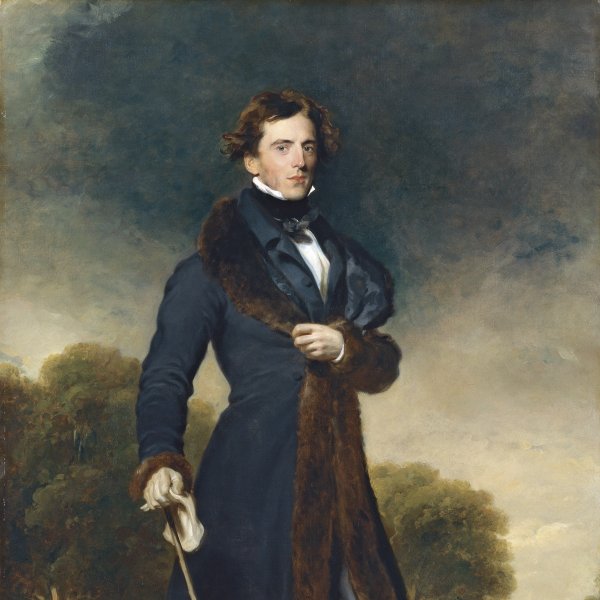Thomas Lawrence
Bristol, 1769-London, 1830
Lawrence was a precocious artist and as a child executed drawn portraits of tourists who visited his father’s tavern in Devizes. In 1780 he moved with his family to the spa town of Bath where he continued to be active and became the principal source of the family’s income. At the age of seventeen he left for London where he studied for three months at the Royal Academy, although he can be considered almost self-taught. In 1790 he painted a portrait of Queen Charlotte (National Gallery, London), his first royal portrait. That same year Lawrence executed one of his masterpieces, the portrait of Elizabeth Farren (The Metropolitan Museum of Art, New York). The success of these first portraits led him to become the most fashionable artist in that genre among the British aristocracy. After the death of Reynolds in 1792 Lawrence became court painter and two years later was made a member of the Royal Academy.
From 1815 the Prince Regent, who elevated Lawrence to a knighthood, became his principal client and the artist executed an ambitious work for the Prince consisting of a series of portraits of leading military figures and heads of state of the nations allied against Napoleon. The first works in this series were painted in London in 1815 but Lawrence continued to work on it on until 1825 and travelled to the various European cities where the post-war congresses were held, including Aachen, Vienna and Paris. These portraits are now in the Waterloo Chamber in Windsor Castle (UK).
In 1819 Lawrence travelled to Rome on the instructions of the Prince Regent to paint a portrait of Pope Pius VII (Royal Collection, London). When the Regent ascended to the throne as George IV, Lawrence was elected president of the Royal Academy, remaining in office until his death in 1830.
From 1815 the Prince Regent, who elevated Lawrence to a knighthood, became his principal client and the artist executed an ambitious work for the Prince consisting of a series of portraits of leading military figures and heads of state of the nations allied against Napoleon. The first works in this series were painted in London in 1815 but Lawrence continued to work on it on until 1825 and travelled to the various European cities where the post-war congresses were held, including Aachen, Vienna and Paris. These portraits are now in the Waterloo Chamber in Windsor Castle (UK).
In 1819 Lawrence travelled to Rome on the instructions of the Prince Regent to paint a portrait of Pope Pius VII (Royal Collection, London). When the Regent ascended to the throne as George IV, Lawrence was elected president of the Royal Academy, remaining in office until his death in 1830.




